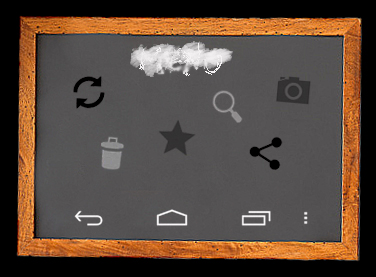Google Says Goodbye To The Menu Button, Hopes You Will Too

A post by Scott Main, lead tech writer for developer.android.com, went up yesterday to remind developers that in Google’s eyes, the Menu button is dead. When Google introduced Android 3.0, developers got their first taste of what Google was planning for the future of its UI. Gone was the Menu button, along with the constraints of hardware buttons period. Introduced was the future of Android: software based action buttons. The ActionBar class is now the new standard and Google wants to remind those moving forward to forget about the menu button and focus on the action bar. This is another step towards an overall unified experience on Android, and one that Google hopes developers will adopt, in order to create a consistent experience from here on out.
The Menu button used to be the standard way for a developer to bring up options within an app, but now that there is no longer a need for hardware buttons, developers are urged to use the action bar for standard options and the action overflow for everything else. If you’ve ever used an Android 3.0+ device, you will recognize the action overflow as the three vertical dots which basically act as a menu button. While it’s essentially the same, Google doesn’t want you to get in the habit of thinking of the action overflow as being the “all actions” Menu button. They’d much prefer you keep your important actions on-screen while allowing everything else to be hidden in the overflow.
This may all seem like a lot of work for developers, especially those wanting to support older Android versions as well as the newer ones, but in reality, it’s quite simple. With only a few lines of code changes, developers can continue to support the Menu button on pre-Honeycomb devices, while also providing the action bar on newer devices. I leave you developers to read more about it over at the developers blog but it should bring a sigh of relief knowing it won’t be as complicated as you may have thought.
This is going to be a hard pill to swallow considering the majority of Android devices are still running pre-Android 3.0 versions, but when looking to the future, this really is the right way to go. As more devices catch up, we will soon find ourselves in an environment much more consistent and both developer and user friendly.
If you’d like more information about migrating away from the menu button and examples explaining it all, hit up the original post over at the Android Developers Blog.
- SourceAndroid Developers Blog


